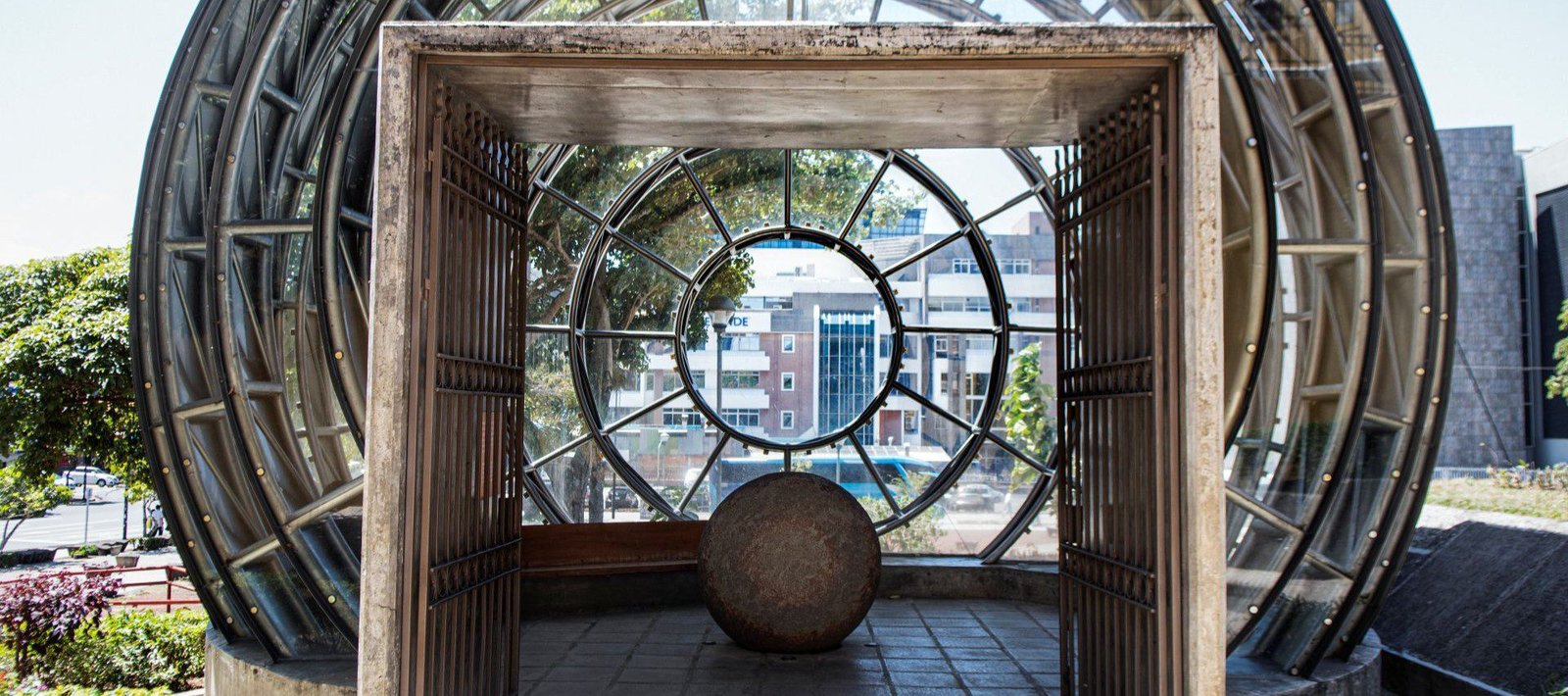
San José: A must see route
If you love both culture and nature, the Costa Rican capital offers five must-see museums as well as spectacular sunsets, surrounded by trees and birdsongs.
By: Gladys Arosemena Bissot
Photos: Ezequiel Becerra Tomás
Summers in San Jose are cool and sunny. The yellowbark, jacarand a, and savannah oak trees tint the sidewalks with shades of yellow, violet, and pink, inviting you to lose yourself in a city where architecture and flora embrace one another.. In Costa Rica there is only summer and winter, but during the first few months of the year the trees are in bloom, reminding one of spring in other regions.
Culture and nature have always been in symphony in this beautiful land and today, that I have been blessed with free time, I come to prove it in six different destinations.
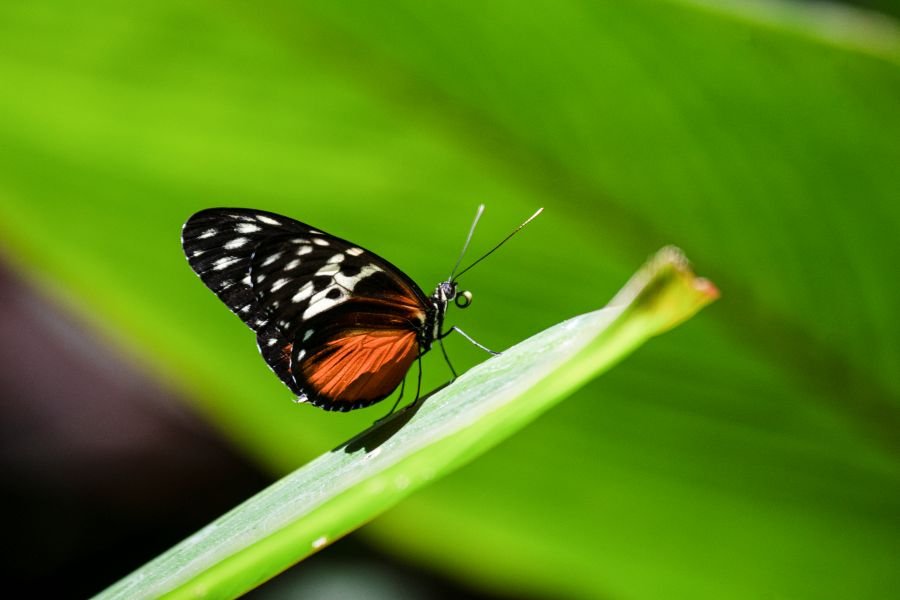
National Museum
The unmistakable facade of the former Bellavista Barracks, which has been declared a Historic Archi- tectural Heritage Site tells me I’ve reached my first destination: the National Museum. This building, located across from the Plaza de la Democracia, has housed the museum since 1950, although this cultural institution, the oldest in the country, has existed since the 19th century and been housed in three different buildings.
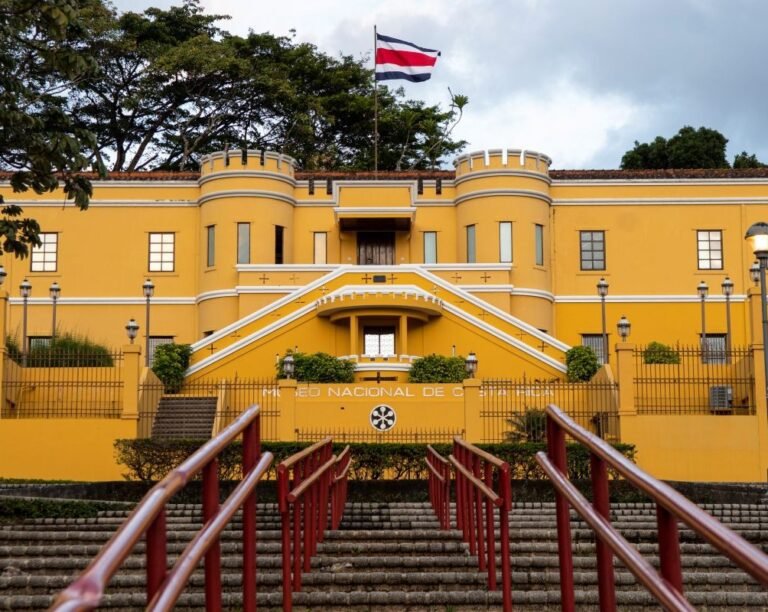
The entrance to the museum is a huge butterfly house, providing a visual clue to some fundamental information: Costa Rica’s protected natural heritage areas represent 26% of its national territory and 5% of the entire planet’s biodiversity. In this garden, any careful observer will be able to witness the miracle o f the metamorphosis of various butterflies, including the blue morpho, the national symbol, notable for its iridescent wings.
The National Museum has been in its current home since 1950, although this cultural space, the oldest in the country, has existed since the 19th century and occupied three different buildings.
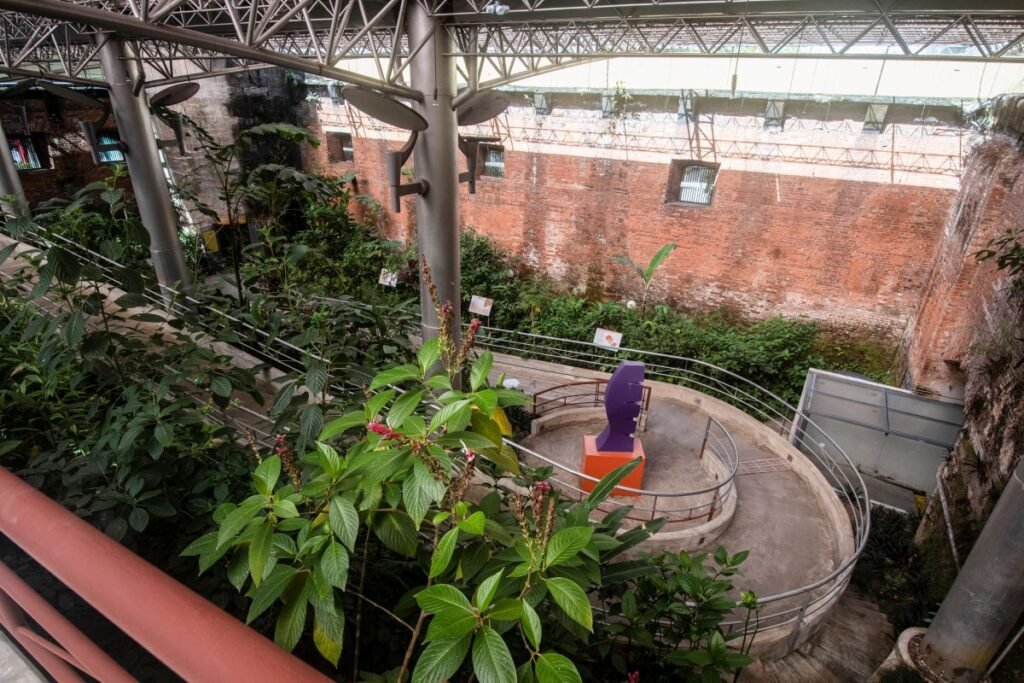
In fact, I see a morpho posed discreetly atop a stone wall that recalls a major event in Costa Rican history: the abolition of the army. The choice of butterflies as the garden’s protagonists could not be more appropriate; their metamor- phosis perfectly emulates the historic shift in Costa Rica, which left behind its army to embrace the construction of a country where teachers are prioritized instead of a military.
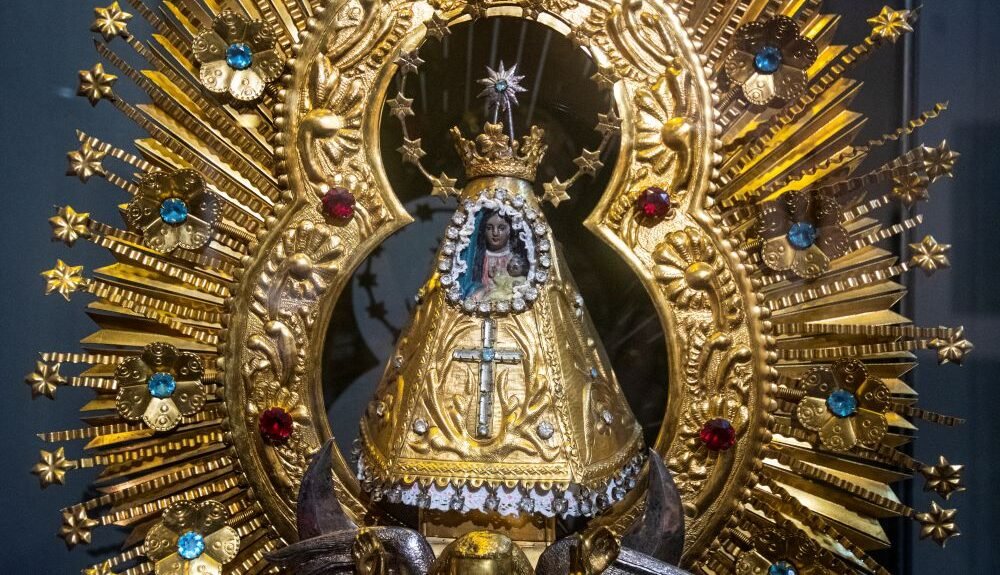
The old Bellavista Barracks––with its battlements, gun emplacements, and portholes typical of the military era––houses ancient dungeons, turrets, baths, and the First Commander’s House, a room with an eclectic mix of brickwork and French wattle and daub walls that contrast with the elegant wooden masonry and antique furniture.
As I continue on my way, the many rooms gradually lead me through the country’s history, from pre- Columbian to Republican times.
Jade Museum
The first thing one notices about the building that houses this museum, which is run by the National Insurance Institute, is its resemblance to jade, the semi-precious stone that plays the starring role
in an exquisite archaeological narrative. The cool air with just the right amount of air conditioning draws me into the space, which is centered around a skylight that illuminates my way through the museum’s five floors of permanent and temporary exhibits.
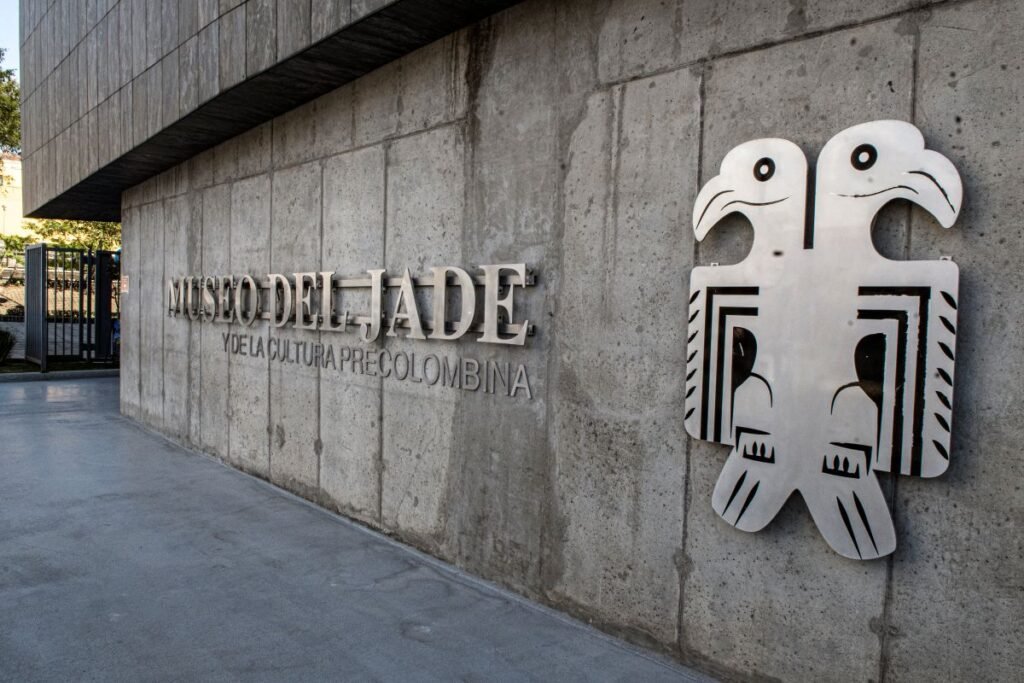
In 1998, the Metropolitan Museum of Art in New York exhibited “Jade in Ancient Costa Rica“ as a traveling treasure of unprecedented historical value.

I confess that my first contact with some of the pieces in this collection came in New York in 1998, when the Metropolitan Museum of Art hosted the “Jade in Ancient Costa Rica” exhibition, a traveling treasure of unprecedented historical value.
Umbral, with its enormous block of raw jade, invites them to discover the
welcomes visitors and history of this stone arrayed in a snake-shaped display case. The choice of a snake is no coincidence; the animal represented rain, a sacred space, or even the gods to pre-Columbian cultures.
El jade, El día, La noche, Memoria y Acopio (Jade, Day, Night, Memory,
and Gathering)––lead us through daily life in the pre-Columbian world, the manufacture of utilitarian and ceremonial objects, trade practices, and the value of manufactured objects in daily life and in the underworld. The narrative also touches on ancient beliefs about life and death and the role of jade, the stone that the Aztecs and Mayans used to relieve their physical ailments. These rooms house the world’s largest jade collection, as well as ceramic, bone, wood, and shell remnants.

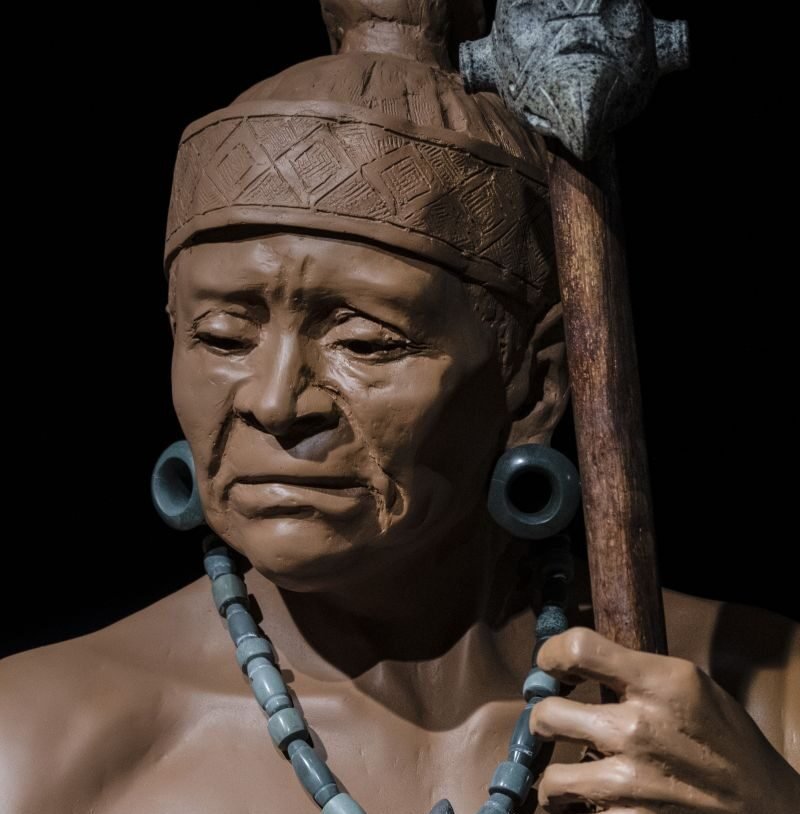
Today, the temporary exhibition hall welcomes a grand visitor: the collection of engravings with which Salvador Dalí illustrated Dante Alighieri’ Divine Comedy.This unexpected journey through Hell, , Purgatory and Paradise allows me compare European religious views with those of pre-Columbian ndigenous peoples..
Pre-Columbian Gold Museum and Numismatic Museum
Walking west a few blocks, I discover the Pre-Columbian Gold Museum. This underground museum, a landmark of Costa Rican architecture, explores pre-Columbian history and the indigenous worldview through metallurgy
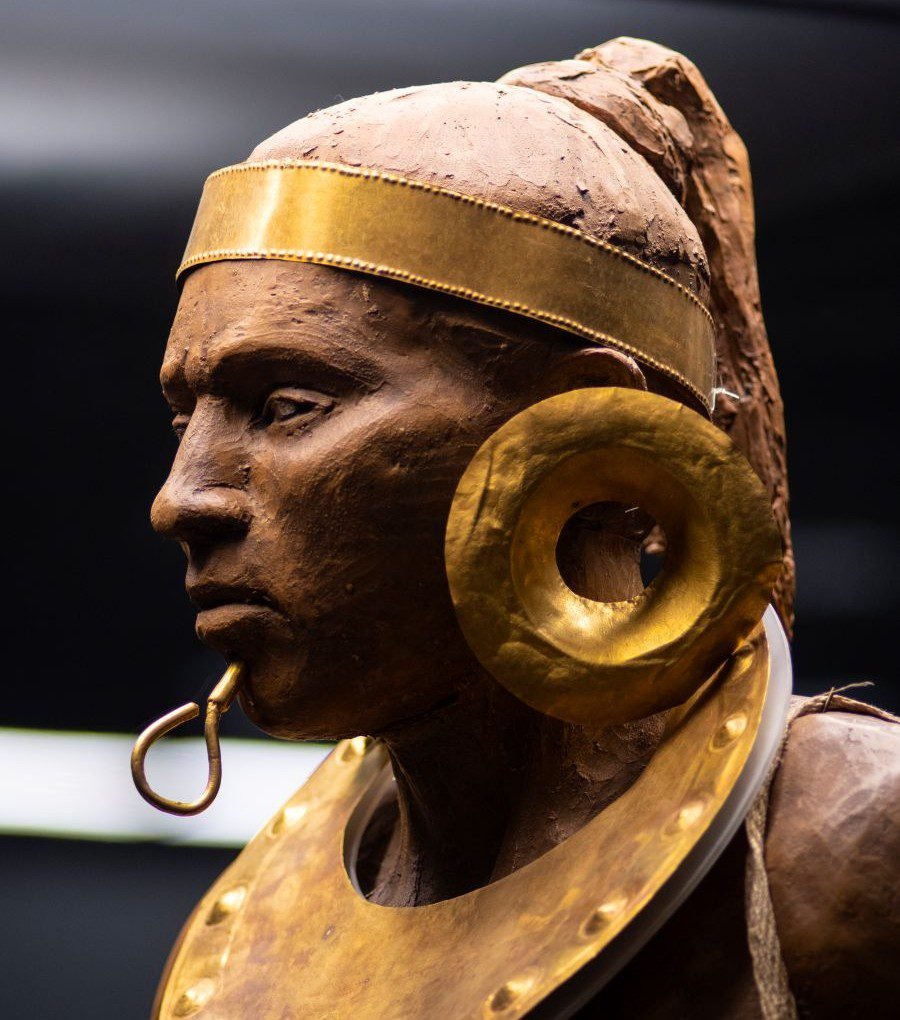
This underground building, a landmark of Costa Rican architecture, protects and shares pre- Columbian history and the indigenous world
The building also houses the renovated Numismatic Museum, where splendid curation provides insights into the history of cacao as an official currency, as well as the beads, escudos, and reales used prior to the colón, Costa Rica’s present-day currency.
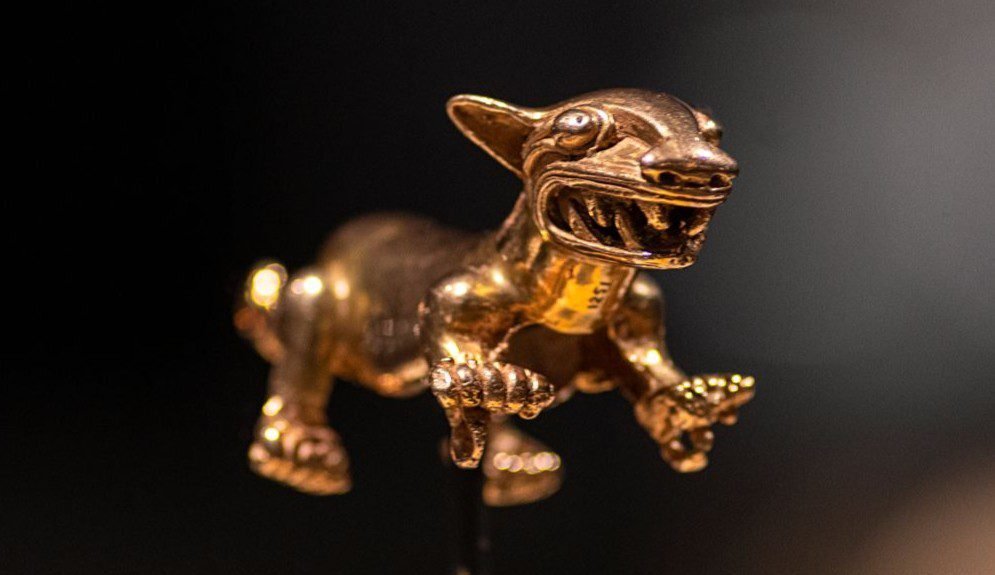
The unparalleled goldsmithing skills of the na- tion’s earliest inhabitants shine in nearly seven hundred pieces of gold displayed alongside the tools, stone objects, and ceramics the first inhabitants of this land used in their daily lives and their transition to the afterlife.
The process of designing and manufacturing banknotes and coins can be experienced in various tactile reproductions covering novel themes, such as architecture in numismatics and even biodiversity as an important motif in various means of payment.

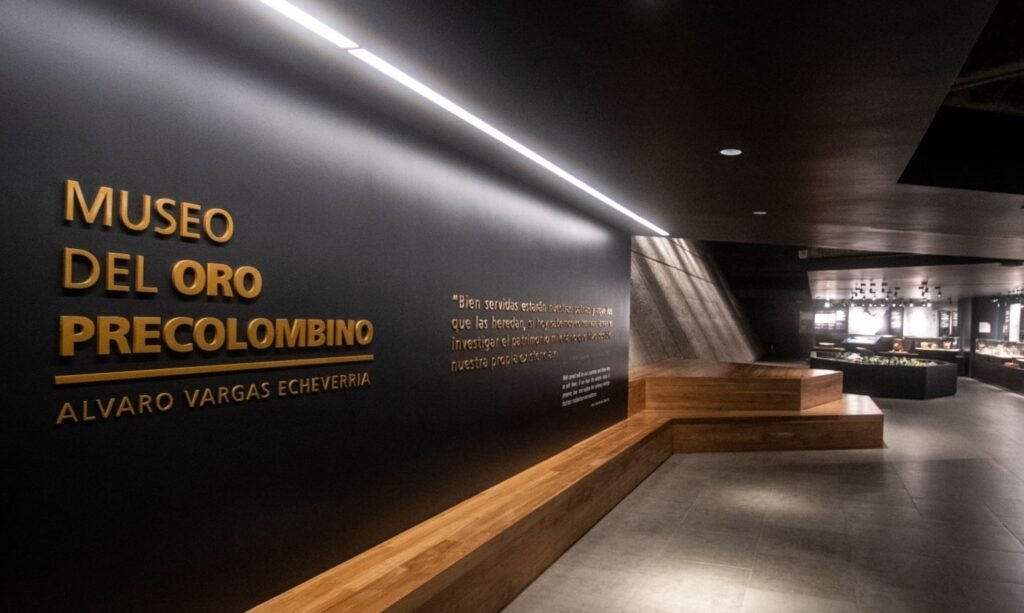
The museum provides visitors with a view of the five colón banknote, now in disuse, but considered one of the most beautiful in the world, with its reverse side featuring a reproduction of the Allegory of Coffee and Bananas, a work by the Italian artist Aleardo Villa, originally painted on the ceiling of the National Theatre.
I opt for a taxi ride for a little rest while moving on to my next destination.
Museum Dr. Rafael Ángel Calderón Guardia
It is possible to take a journey through the history of the social reforms enacted from 1940-1944 by former president Rafael Ángel Guardia, housed in his elegant old home.
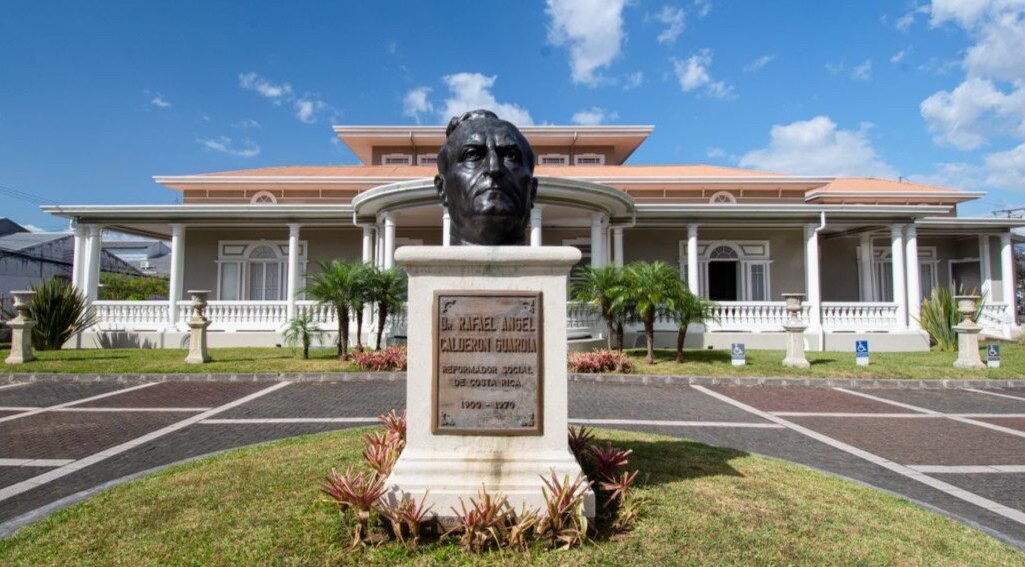
The reforms were a prelude to the social security that Costa Ricans enjoy today and can be explored in detail in the museum’s exhibitions and the Enrique Guier Sáenz Library, where researchers and the general public can deepen their knowledge of this important historical period.
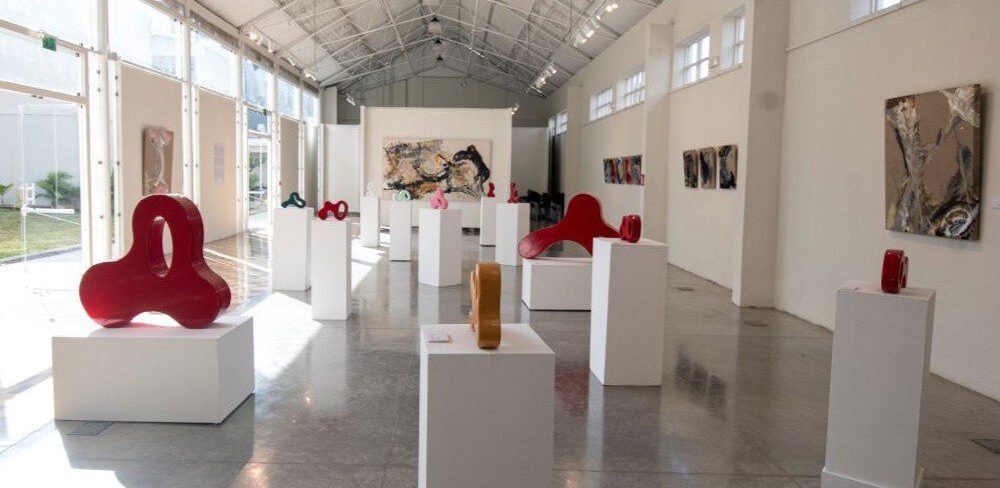

Inside the building, which has been declared a national heritage site, the beauty of ancient mosaics contrasts with the wooden ceiling and perfectly preserved French wattle and daub walls. The refreshing cool atmosphere inside the building encourages us to revisit history and encounter modern influences and temporary avant-garde art exhibitions featuring a variety of visual arts.
Museum of Contemporary Art and Design
The building’s old façade contrasts with the multi-aesthetic design of its interior. It’s always a pleasure to explore MADC’s contemporary design works.
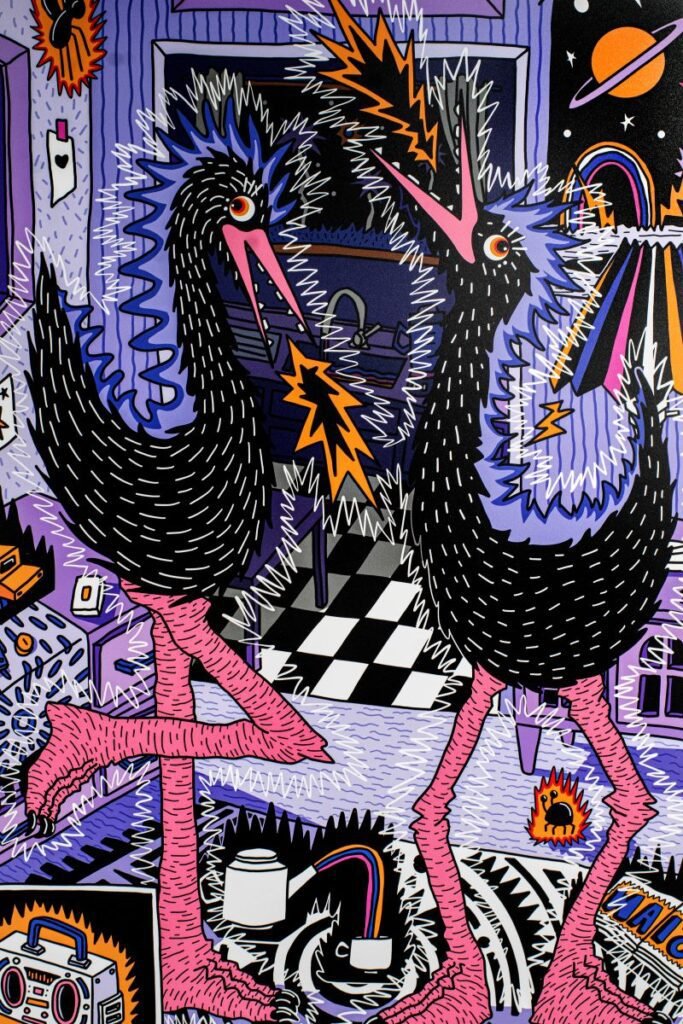
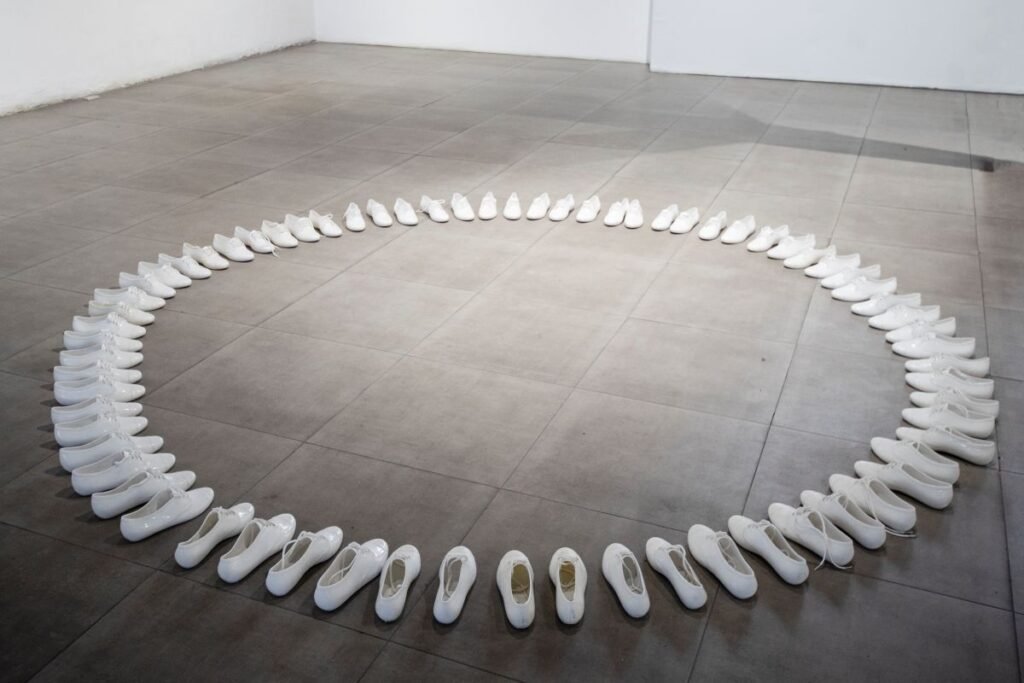
I stroll through its four exhibition halls feeling like I’m at a party, celebrating the diversity of design and reflecting on the aesthetic times in which we live.
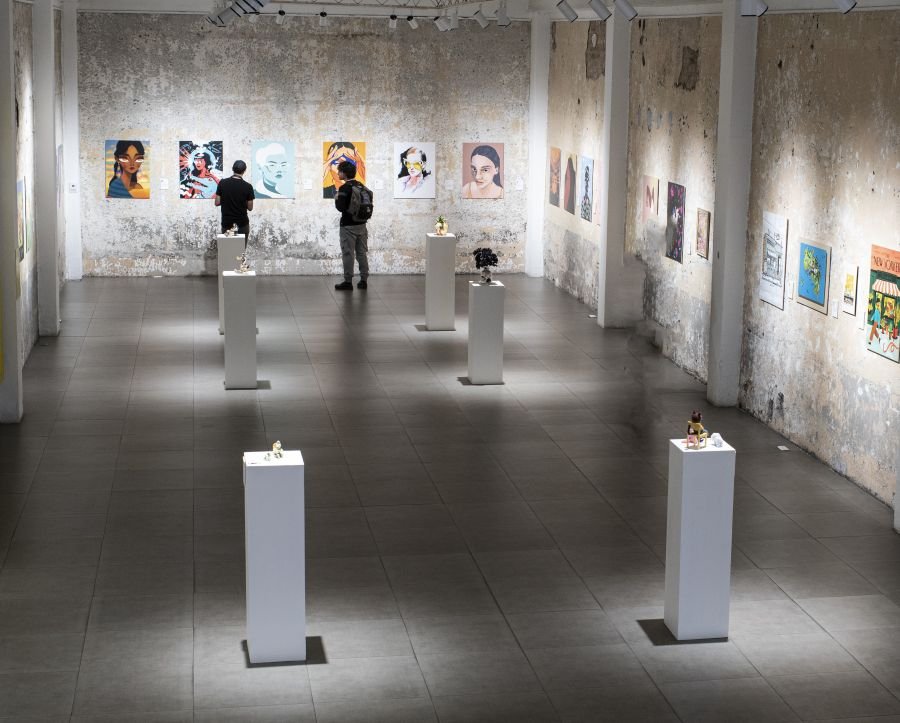
Innovative kaleidoscopic graphic works interact playfully, inevitably, with the digital influence of our time. Certain works lead me through spaces where black and white contrast, others fill my sight with vibrant
colors; all, in unison, speak of the urban challenges of modernity. The works foster an intimate dialogue between the creator and the viewer, producing a variety of emotions and a clear social critique, based, of course, on aesthetic freedom.
Ruta Naturbana
In the heart of the capital lies the first of the naturbanas routes, part of an ambitious project to connect 43 kilometers of green spaces in a rescue of ecosystems near the capital’s rivers and their tributaries that can be traversed without motors.. While it is true that this first completed section is only five hundred meters long, it possesses natural richness of great proportions.

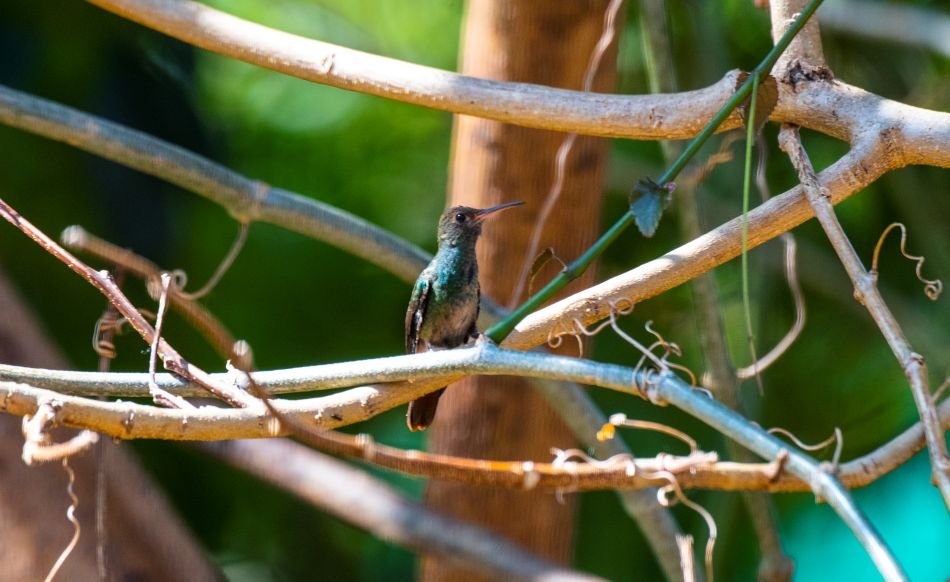
It’s possible to spot more than 65 species of birds; mammals (sloths, opossums, raccoons, squirrels, and weasels); reptiles (iguanas, anoles, basilisks, and even snakes); amphibians (where the endangered golden-eyed frog stands out); as well as trees that discreetly fan this urban lung.
My day began in a butterfly garden and ends in this open-air space. I look toward the horizon and feel pleased to see that San José continues to be a magnificent destination waiting to be discovered.
More information
Costa Rica National Museum
Tuesday to Saturday, 8:30 am to 4:30 pm
Sunday, 9:00 am to 4:30 pm
Jade Museum
Monday to Sunday from 8:00 am to 5:00 pm
Pre-Columbian Gold Museum and Numismatic Museum
Monday to Sunday, 9:15 am to 5:00 pm
Dr. Rafael Ángel Calderón Guardia Museum
Monday to Saturday from 9:00 am to 5:00 pm
Museum of Contemporary Art and Design
Naturbanas Routes
Sitio web: www.rutasnaturbanas.org



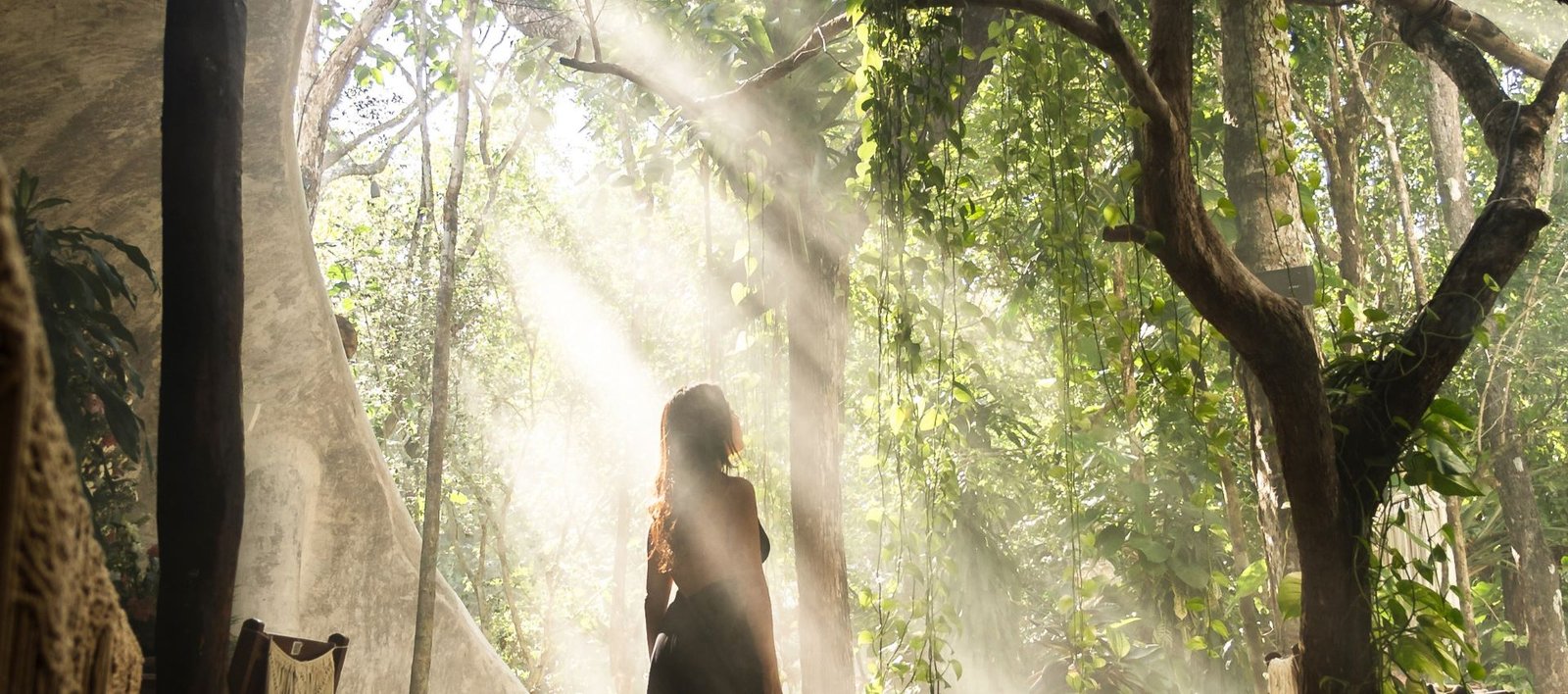
Leave a Reply